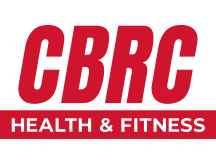BEING ACTIVE WITH CANCER
Being active during and after a cancer diagnosis is an important way to reduce fatigue, increase strength and help ease depression. Regular physical activity, including aerobic activity and strength training, can help you get through your treatments and decrease treatment side effects. In addition, stretching can help restore flexibility in joints that have lost range of motion due to surgery or radiation.
AEROBIC ACTIVITY
Increase heart rate and breathing to build stamina. Build up to 150 minutes/week. Remember some activity is better than none.
What? Any rhythmic, continuous activity.
How Often? 3-5 days a week
How Hard? Fairly light to somewhat hard.
How Much? Start with a few minutes. Gradually build up to 30-6o total minutes over the day.
Aerobic Activity Cautions: Some cancer medications and treatments cause side effects. Check with your health care provider for specific precautions.
STRENGTH TRAINING
Strength training is important for people with cancer because it builds muscle. Muscle tissue plays a big role in balance, fatigue, and quality of life. Muscle may also be important to processing chemotherapy drugs. You don’t have to be a bodybuilder! Plus, strength training can make daily activities easier and safer.
What? Hand weights, resistance bands, weight machines, or bodyweight.
How Often? 2-3 days a week
How Hard? Start with light effort then build to medium to hard effort.
How Much? 10-15 reps to start (for each major muscle group). Build to 8-12 reps and repeat 2-4 times through.
Remember: If you need it, get help from our exercise professionals. They can teach you the right way to do exercises and how to breathe properly.
OTHER TYPES OF PHYSICAL ACTIVITY
Flexibility: Gently stretch your muscles 2-7 days/week to the point of feeling tightness. Hold for 10-30 seconds.
Take More Steps: Simply take more steps! Use a smartphone or activity tracker to measure. Slowly build up to 9,000 steps.
Balance: Stand on one foot, walk a line or use a balance board.
FINAL WORDS
Research supports the following benefits of physical activity for cancer survivors. Being active:
-Helps reduce fatigue, the most common side effect of cancer treatment.
-Improves symptoms of depression and anxiety and helps you sleep better.
-Helps maintain or improve physical function (your ability to get things done in your life)
-Improves your immune system, appetite, muscle strength, range of motion and simply helps your body and brain work better.
-Does not increase your risk of breast cancer-related lymphedema and may help with these symptoms.
-Decreases your risk of cancer coming back.
MOVEMENT HEALTH & MOVEMENT FUNCTION
Our Exercise Professionals believe that exercise is medicine and are eager to assist those who have had a cancer diagnosis. To get started today call (509) 943-8416 or email morganfewel@my-cbrc.com.
American College of Sports Medicine, Exercise is Medicine accessed December 2020, <https://www.exerciseismedicine.org/>
